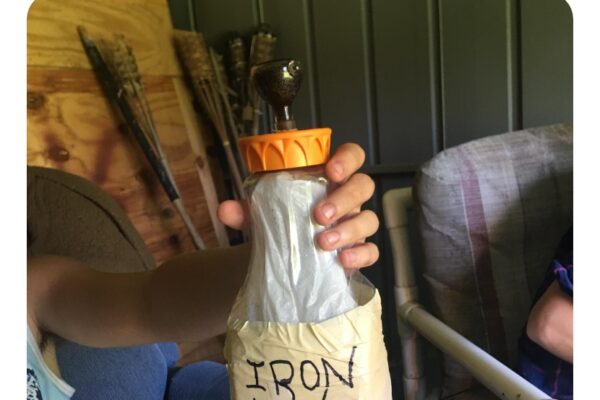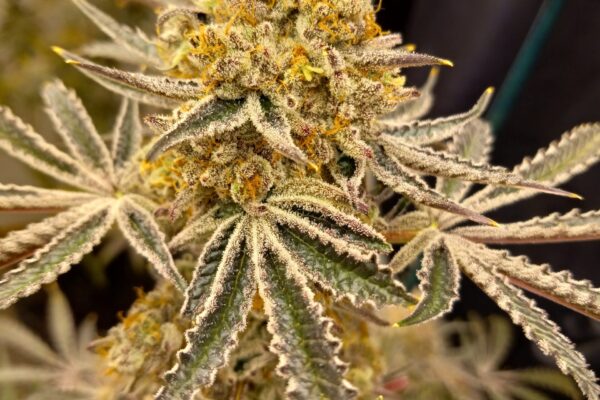Your cart is currently empty!
How to Use Silica In The Cannabis Garden
K2O3Si
Potassium silicate will save you. this is not a sales pitch in an industry that sometimes wants to believe in a magic potion that will take care of all your problems but Potassium silicate may fit the description. Potassium silicate is a beneficial supplement for your plants; one that will make them bigger, stronger, more resilient to pests and disease and capable of yielding more. period.
Silicon is the second most common element in the earth’s crust.
It is widely regarded and agreed that plants require 17 key elements to successfully develop. These are comprised of macronutrients; nitrogen, phosphorous, potassium, calcium, magnesium and sulphur, and micronutrients; iron, manganese, boron, copper, molybdenum, zinc, chlorine and nickel. Plus, the obvious elements of carbon, hydrogen and oxygen.
With Silicon being found in such abundance in plant tissues, there is now an argument that it should be considered as a relevant macronutrient
when plants are grown without Silicon, they run the risk of being structurally weaker than plants grown with. They may be more open to attack from fungal pathogens and pests and can also be more vulnerable to any toxic metals that build up in the root zone.
If you have ever grown hydroponically and thought that your plants seemed a little weaker or more susceptible than previous crops grown in soil, it may be due to a lack of Silicon.
Hydroponic feeds do not contain Silicon in any noticeable quantity, if at all. The reason for this is that for Silicon to stay soluble, it requires a high pH – greater than 7. Unfortunately it cannot be included in a normal, hydroponic two-part feed as it would react with the other components present and this would most likely lead to a nutrient deficiency
For Silicon to be used as an available additive for your plants, it needs to be kept separate from the basic feed. You could even think of it as your third part to go alongside your usual two-part feed.
Plants can only absorb Silicon in the form of monosilicic acids, these occur naturally as mineral Silicon is broken down and dissolved into water. In hydroponic applications, the most common form of Silicon additive is Potassium Silicate.
Once absorbed, Silicon is transported to where it is required by the plants transpiration system, it is deposited as either hydrated silicon dioxide (which effectively stores water molecules within the plant) between the plant cells or as silica (a gel like substance) within the walls of the individual plant cells. Silicon “builds” the plant, acting as the cement between the bricks in the cell walls or between the actual cells themselves. It increases the structural integrity of the plant, making stems and branches thicker and stronger, and leaves greener and tougher.
The addition of Silicon to your feeding schedule can have an incredible effect on the growth, yield and overall health of your plants. So, how does it actually benefit your plants? This is how it works.
Improved Plant Cell Development – once your plant uptakes Silicon, it is permanently deposited into the cell walls within 24 hours. These deposits form a silica-cellulose framework that are stronger and can be created quicker than they could have been without the inclusion of Silicon. Overall the plant can develop faster and grow quicker when it uptakes Silicon.
Put simply, plant cell walls are like brick walls in a house. When Silicon is taken in by the plant, it is used like cement in a brick wall. So the walls are built quicker and stronger.
Once the ‘cement’ is in place, it cannot be transported elsewhere within the plant, so it’s important to continue to add Silicon throughout the entire growth cycle. This will ensure that all new growth in the plant benefits from the effects.
Balancing Uptake Of Elements – the presence of Silicon in a nutrient solution can positively affect the uptake and absorption of several macro and micro nutrients. Silicon increases Zinc uptake; an essential element in growth and photosynthesis.
Silicon increases the availability of Nitrogen to the plant as its application (in soil) will reduce the loss of Nitrogen to Ammonia (a naturally occurring process in soil). Nitrogen is key in the vegetative stage of plant development as it promotes healthy new foliage growth.
Silicon also balances the uptake of Phosphorus, reducing the risk of toxic levels being taken in by the plant. This is a particularly helpful characteristic to all you home growers that like to use a concentrated bloom stimulator (or root stimulator, for that matter!) with a high PK value.
Protection Against Metal Toxicity – Silicon is known to compete for uptake against certain metal elements that are made available to the plant. These metals include; Aluminium, Manganese and Iron, all essential for plant growth, but an excess of availability of any of the three elements can be problematic for your plants.
If there is a Silicon deficiency around the roots, then plants can uptake these metal elements to toxic levels. This can lead to problems that are not only detrimental to yield, but are also quite difficult to diagnose. So, you could go all the way through your grow, without rectifying the problem and be seriously down on yield at harvest time.
By increasing the dose of Silicon available to your plants, there will be a corresponding increase in the deposits of silica in the cell walls and Silicon will compete against the metals available in the nutrient solution, preventing toxic build ups. Therefore adding Silicon to your feeding schedule protects against metal toxicity.
Maintain Cell Integrity and Plant Strength – this is one of the more obvious effects of adding Silicon. Your plants will be visibly stronger, with wider, thicker stems and branches. The wider the stem, the more uptake and transpiration of water and nutritional elements is possible. So, in theory the plants will grow bigger and at a faster pace.
obviously, thicker branches will be able to hold more weight without the need of additional supports. If you have you got to the fourth or fifth week of flowering and realised that you haven’t put enough support in place to keep your buds stable? silica will solve this problem.
Protection Against Pests and Disease – this is a really fantastic benefit, particularly for home growers who prefer not to spray their plants with pesticides or fungicides. The protection that Silicon offers against fungal pathogens is two-fold:
1. The Silicon that has been deposited in the cell walls effectively toughens the outer ‘skin’ of the plant. This makes it far more difficult for pathogens to penetrate the plant in the first place.
2. If a plant is attacked by a pathogen, for example powdery mildew or pythium, the plant will transport and deposit any Silicon that it uptakes to the area of attack. This then stimulates the production of anti-fungal compounds that halt the infection process.
The toughened outer ‘skin’ reduces the risk of infestation from sucking insects.
Overall Increase In Weight And Bulk – Plants grown with Silicon will have leaves that are darker green, increasing their potential for photosynthesis and better growth. This, together with wider, stronger branches and stems and resilience to disease and pests will ultimately lead to bigger yields.
Comments
-
Very good article.
-
Great article, but now that I’m sold on using potassium silicate, I’d like to know about dosage and how often apply. Can you employ it in a foliar spray?
-
It seems to work, I had some real tough conditions this summer and I think I think silica helped. However there are some things to consider when using Silica. (Like GH armor si) The PH of the product is high (alkaline) and needs to be added first. It seemed to contribute to stem strength, vs untreated plants. I’ll also add that silica did not add any off flavors or cause uneven burning from what I’ve observed.
-
How do I use it. How much, how often
-
I don’t think there is a good or bad way to use silica. The way I use it I feed my plants an alternating diet of Cal-Mag on week and silica the next. I’m not saying this will give the best results, but it works damn good for me.
-
Hi there, some great comments to be honest. But i was wondering what the ideal mix is to ml to litres for example and how often to i use this product on my plant
-
Is there things that increase the uptake of Silicon? Such as humic/fulvic acid, or using bennies, maybe enzymes? Is there a good pH range to increase uptake of Silicates?
-
can someone please tell me how much potassium silicon to mix with water to water my outdoor canibus plants with.., and also to use as a spray for plant bugs????
-
Mike did you find out the mix ratio of Potassium silicon to water… for feeding and spraying plants?
-
was also wondering on the silicon mix. I have an outdoor organic grow using steamed mussel powder, worm castings,oyster shell powder, dolomite lime, gypsum , sea kelp and a base soil with 30% perlite. Do you think silicon will be of any benefit to my grow?
-
1 tsp of silicate per gallon of water. Add it last as it will raise your ppm’s & increase ph level. Check ph levels after adding and adjust accordingly
-
“Hydroponic feeds do not contain Silicon in any noticeable quantity, if at all. The reason for this is that for Silicon to stay soluble, it requires a high pH – greater than 7. Unfortunately it cannot be included in a normal, hydroponic two-part feed as it would react with the other components present and this would most likely lead to a nutrient deficiency”
would this not mean that adjusting your PH back down would make the silicon ineffective? and therefore would have to be added to the plant alone without other nutrients? and furthermore this post claims that the silicon will be in the cells within 24 hours so from my understanding I would add the silicon with a PH around 7.1 without other nutrients and then the subsequent watering flush with PH 6.0 to fix soil PH then continue to feed I would also assume based on the 24 hour uptake that you could do this process approximately once every two weeks all the way through your plants lifecycle and get the desired results listed above.
Again this is based on my understanding of the post if I am way off on something please correct me.
-
Silica is great for vegging. I use it “every watering.” You add silica to the water and stir completely and let it sit for a few minutes to blend well. Then you can add your nutrients and pH the water once your nutrients are added. You must add the silica first and mix it or else the other nutrients will break it down and make it unusable or at the most, minorly effective.
What it does is that it seriously increases the stem size and strengthens the stems. If you super crop you’ll certainly know the difference when trying to bend your stems. It also makes your stems stronger, thicker and like the article says, it’s the mortar between the bricks.Now here’s another factor that I really like about it, and that it controls mites. Oh you’ll find eggs all over the place but you won’t find any mites. How that works is the mites live long enough after they hatch just to produce another set of eggs but they die rapidly because they cannot feed and what little they do eat explodes their abdomens.
The silica is a natural occurring process in your outdoor gardening. Bag dirt uses sterilization and a lot of the silica is not available in the bag. Hence the use of additional silica makes a tremendous difference when you use every watering with your plant.I don’t have to build a scrog or use bracing to support my plants and I grown to usually about 4 feet indoors with maybe an occasional support because the buds do become quite heavy. I’m also using 100% LED’s which makes the buds more dense than using Halide lighting. I also stay away from commercial fertilizer because of the metals and salts and synthetic nutrients.
I use organic fish emulsion in addition to other macronutrients and branches aminos. Your GNC products for the amino acids and and trace minerals work very well for your plans because it most of those products are plant-based, predigested and quickly absorbed into your plant.The key to growing good substantial weight with excellent terpenes not to mention the quality of the effects… Believe it or not by keeping it simple. Also try and learn the history of where your strain originated from and use that climate from that area in your grow room for quicker and more positive results. Keep it simple, keep it natural and be patient using fresh water with proper pH and you’ll have the some of the best buds on the block ever, guaranteed!
-
Wow that was a long one. Great thread tho!
-
I’m using coco and I use both every time I feed. Get the best you can afford and go by the directions on the bottle. Also research and ask the people at your grow supply place. I do what my mentors say mostly but … I miscalculated the amount and put twice as much in a feeding. I’m crossing my fingers but … Because of what it is … I don’t think it will hurt. I never overwater so if anything … I’ll skip it next feeding or use less. My plants are looking super happy ????
-
I am using house & garden nutrients in coco. Ph in ro water is reduced to the low 4s when mixed at higher concentrations of H&G. I then use silica to raise ph back up to the mid 5s. I’m not sure if this is effective as I originally thought after reading the posts. Especially the ones talking about the absorption of silica at lower ph levels.
-
Use 1ml a gallon every watering add the silica first before other nutrients and before you pH solution
-
What is the pH range for Silica uptake? Tried googling it and can’t find it anywhere.
-
A lot of great info! I had no idea it needs a ph of 7! I have just introduced silica into my grow for the first time. Thank you DGC!
-
Silica first ALWAYS! Then nutrients. Then pH.
I use silica after the second week of veg, through the second week of flower. In some extreme circumstances, you may run it longer into flower, but in most indoor, semi-stress free environments, there isn’t a huge benefit to running it all the way through flower.
-
why now rates for foliar spraying??????????????????????????????????
-
Any info on how silica affects flower?
-
Thanks DGC! I bought some from Build A Soil and have been using it but now I know what that actual benefit is. Awesome.
-
I use fasilitor for my silica. I just began foliar feeding using it once every 6-7 days at a rate of 4ml/gal. Since I’m foliar spraying should I cut it out of my nutrient root feeding? Or should I use it in both feeds?
-
I wouldn’t MichiganMatt. Just think of it just as a little boost. You don’t need to add but maybe a drop or 2 into a 32oz bottle. Be careful to strong of the spray can burn them.
-
Potassium silicate is amazing but ive had great results with adding it to my mix..
Always put Silicates first micro second phosphates and then nitrates then cal mag (if seperate from your micro) second to last i add seaweed (few drops)(veg only)(acts as a ph down) then a lil molybdenum with fulvic acid and Humic (im running new millenium nutrients line) -
Im also using r-o with a starting ph of 7
-
Thank you for that write up. Good information.
-
Nice post. Gonna have to try some silica. I haven’t heard a bad thing about it.
-
I was just reading a maximum yield article and it said to make sure you mix your nutrients before adding silica. On this post I read the other way around. Does anyone have an answer for this?
-
Awesome article brother, this was something missing from my arsenal and this article pretty much covered every single question i had about it 🖒🖒🖒
-
I don’t hear/see anyone talking about Dr. Bruce Bugbee’s statement on trichomes and silica. It seems very important. The source of silica (potassium silicate, vermiculite, diatomaceous earth, etc) seems something of debate. See Dr. Bugbee’s statement on silica here https://youtu.be/JwtkHxv_3pU?t=1620
Recent Posts
First time grower needs help!!!
I have been watching the DGC for quite a while now, not a patreon yet but very soon! I…
Dude Grows Show 1631
What’s Growing On DGC? The Dude and Scotty are Hanging Out Talking Cannabis News, Culture and Growing. https://open.spotify.com/episode/0yS6jok54qSAap0lR9hl6P?si=ec4a2078a2724dab THIS…
Wildberry Cake
Wildberry Cake got sliced
Thank You Grambo!!
You guys gave me this idea. Well more or less Grambo. There was an episode you guys were talking…
Tangie Ripper
Chopped at day 63, Tangie Ripper from Irie Genetics. This was my first run of this strain and I…







Leave a Reply
You must be logged in to post a comment.